Suborder Serpentes Scientific name Elapidae Phylum Chordata | Superfamily Colubroidea Higher classification Alethinophidia Rank Family | |
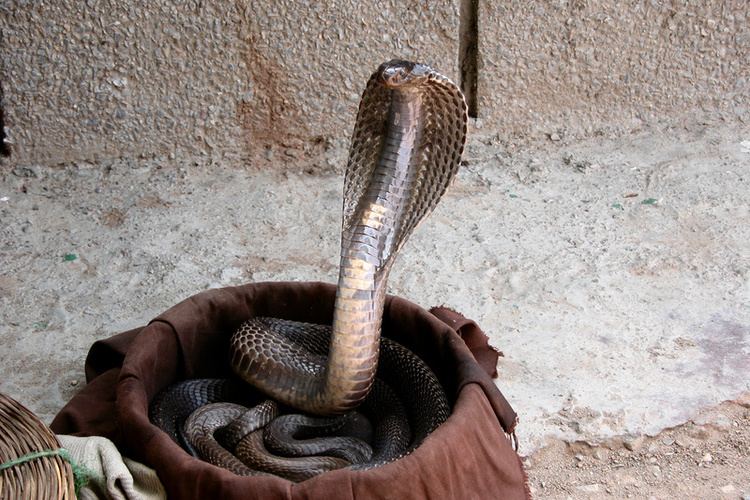 | ||
Lower classifications King cobra, Cobras, Coral reef snakes, Mamba, Indian kraits | ||
The Elapidae (Greek ἔλλοψ éllops, "sea-fish") are a family of venomous snakes found in tropical and subtropical regions around the world, terrestrially in Asia, Australia, Africa, North America, and South America, and aquatically in the Pacific and Indian Oceans.
Contents
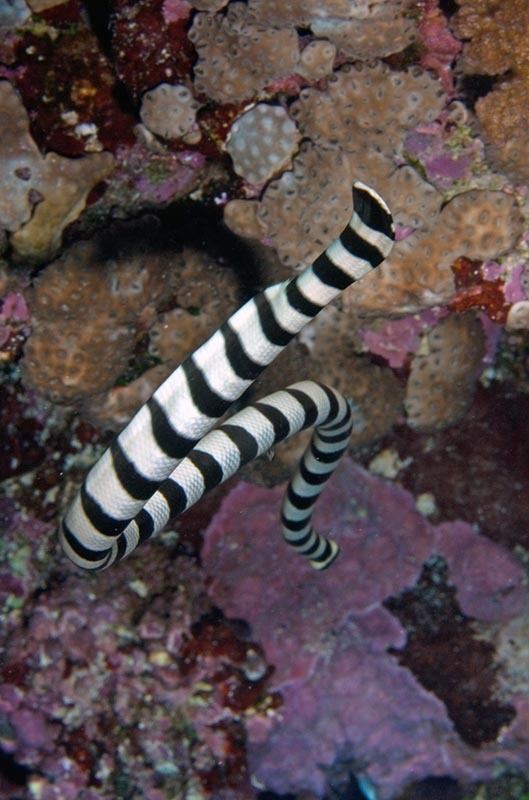
Elapid snakes exhibit a wide range of sizes, from 18-cm species of Drysdalia to the 5.6-m king cobra. All elapids are characterized by hollow, fixed fangs through which they inject venom. Currently, 325 species in 61 genera are recognized; 58 genera and 251 species are in the Old World, against a minor diversity of three genera and 74 species in the New World.
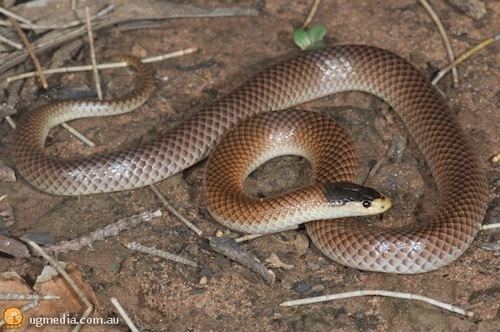
Description
All elapids have a pair of proteroglyphous fangs used to inject venom from glands located towards the rear of the upper jaws. In outward appearance, terrestrial elapids look similar to the Colubridae: almost all have long and slender bodies with smooth scales, a head covered with large shields and not always distinct from the neck, and eyes with round pupils. In addition, their behavior is usually quite active, and most are oviparous. Exceptions to all these generalizations occur: e.g. the death adders (Acanthophis) include short and fat, rough-scaled, very broad-headed, cat-eyed, live-bearing, sluggish ambush predators with partly fragmented head shields.
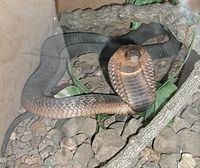
Some elapids are strongly arboreal (African Pseudohaje and Dendroaspis, Australian Hoplocephalus), while many others are more or less specialised burrowers (e.g. Ogmodon, Parapistocalamus, Simoselaps, Toxicocalamus, and Vermicella) in either humid or arid environments. Some species have very generalised diets (euryophagy), but many taxa have narrow prey preferences (stenophagy) and correlated morphological specialisations, e.g. for feeding on other snakes, elongated burrowing lizards, squamate eggs, mammals, birds, frogs, fish, etc.
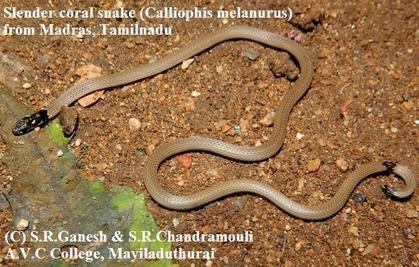
Sea snakes (the Hydrophiinae, sometimes considered to be a separate family) have adapted to a marine way of life in different ways and to various degrees. All have evolved paddle-like tails for swimming and the ability to excrete salt. Most also have laterally compressed bodies, their ventral scales are much reduced in size, their nostrils are located dorsally (no internasal scales), and they give birth to live young (ovoviviparous). In general, they have the ability to respire through their skin; experiments with the yellow-bellied sea snake, Pelamis platurus, have shown that this species can satisfy about 20% of its oxygen requirements in this manner, allowing for prolonged dives. The sea kraits (Laticauda spp.) are the sea snakes least adapted to aquatic life. They spend much of their time on land, where they lay their eggs. They have wide ventral scales, their tails are not as well-developed for swimming, and their nostrils are separated by internasal scales.
Dentition
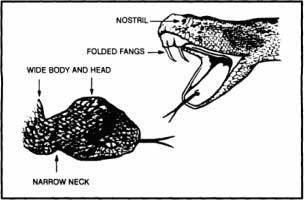
The fangs, which are enlarged and hollow, are the first two teeth on each maxillary bone. Usually only one fang is in place on each side at any time. The maxilla is intermediate in both length and mobility between typical colubrids (long, less mobile) and viperids (very short, highly mobile). When the mouth is closed, the fangs fit into grooved slots in the buccal floor and usually below the front edge of the eye and are angled backwards; some elapids (Acanthophis, Oxyuranus, Dendroaspis, and Ophiophagus) have long fangs on quite mobile maxillae and can make fast strikes.
A few species are capable of spraying their venom from forward-facing holes at the tips of their fangs using pressure, and this can act as a means of defense.
Distribution
On land, these snakes are found worldwide in tropical and subtropical regions, except in Europe. Sea snakes occur mainly in the Indian Ocean and the southwest Pacific. However, the range of one species, Pelamis platura, extends across the Pacific to the coasts of Central and South America.
Venom
Many elapids are potentially deadly venomous snakes. Their venom is mainly neurotoxic, although many of them also possess several other types of toxins, including cardiotoxins and cytotoxins. This family has some members considered to be the world's most venomous land snakes based on the murine LD50 of their venom, such as the inland taipan. Additionally, some large-sized elapids, such as the Asiatic king cobra, African black mamba, forest cobra, and Australasian coastal taipan, can inject a large quantity of venom during envenomation.
Elapids use their venom both to immobilize their prey and in self-defense.
Genera
* Not including the nominate subspecies
Taxonomy
The table above lists all of the elapid genera and no subfamilies. In the past, many subfamilies were recognized, or have been suggested for the Elapidae, including the Elapinae, Hydrophiinae (sea snakes), Micrurinae (coral snakes), Acanthophiinae (Australian elapids) and the Laticaudinae (sea kraits). Currently, none are universally recognized. Good molecular evidence via karyotyping, protein electrophoretic analysis, immunological distance, DNA sequence analysis, and so on, suggests reciprocal monophyly of two groups:
Thus, the Australian terrestrial elapids are technically 'hydrophiines', although they are not sea snakes. It is believed that the Laticauda and the 'true sea snakes' evolved separately from Australasian land snakes. Asian cobras, coral snakes, and American coral snakes also appear to be monophyletic, while African cobras do not.
The type genus for the Elapidae was originally Elaps, but the group was moved to another family. In contrast to what is typical of botany, the Elapidae family was not renamed. In the meantime, Elaps was renamed Homoroselaps and moved back to the Elapidae. However, Nagy et al. (2005) regard it as a sister taxon to Atractaspis, which shouldhave been assigned to the Atractaspididae.
